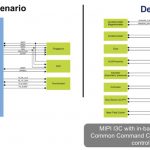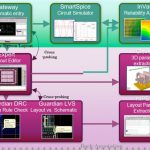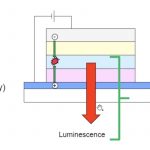This month we’ve seen both Apple and Samsung announce their newest, flagship smart phones, and they each have an incredible number of sensors and components included like: … Read More
Tag: webinar
Something New in IP Lifecycle Management
Last month at DAC I met up with Michael Munsey of Methodics to get a quick update on what has been happening over the past 12 months within his company, and he quickly invited me to watch an archived webinar on their latest tool for IP Lifecycle Management called Percipient. I love to play the board game Scrabble, so i had to Google the … Read More
An Approach to TFT and FPD Design
Webinars are a powerful way for engineers to get updated on EDA and IC design approaches, so I’m sharing what I viewed last month at a Silvaco webinar on TFT and FPD design. You probably are using a TFT LCD display in your TV, monitor, mobile phone, video game system, GPS device or projector. The custom IC design flow offered by… Read More
TCAD for TFT, LCD and OLED Displays
As I write there are multiple displays in front of me that use TFT, LCD or OLED displays:
- ViewSonic Monitors with 24″ display
- MacBook Pro with 15″ display
- iPad Air
- Samsung Galaxy Note 4
- Nexus 7 tablet
- Garmin Edge 820
Approaches for EM, IR and Thermal Analysis of ICs
As an engineer I’ve learned how to trade off using various EDA tools based on the accuracy requirements and the time available to complete a project. EDA vendors have been offering software tools to help us with reliability concerns like EM, IR drop and thermal analysis for several years now. Last week I attended a webinar … Read More
The Importance of EM, IR and Thermal Analysis for IC Design – Webinar
Designing an IC has both a logical and physical aspect to it, so while the logic in your next chip may be bug-free and meet the spec, how do you know if the physical layout will be reliable in terms of EM (electro-migration), IR (voltage drops) and thermal issues? EDA software once again comes to our rescue to perform the specific type… Read More
How to Implement a Secure IoT system on ARMv8-M
This weekend my old garage door opener started to fail, so it was time to shop for a new one at The Home Depot, and much to my surprise I found that Chamberlain offered a Smartphone-controlled WiFi system. Just think of that, controlling my garage door with a Smartphone, but then again the question arose, “What happens when a … Read More
Lowering Costs for Custom SoC Development – ARM and Tanner EDA
Cost is a major barrier when an electronic design company starts to consider developing a custom SoC for a particular market segment. But what if there was a way to lower the development cost, or even get to an SoC proof of concept for no cost except of course for your engineering expenses? That value proposition caught my attention… Read More
Analyzing All of those IC Parasitic Extraction Results
Back at DAC in 2011 I first started to hear about this EDA company named edXact that specialized in reducing and analyzing IC parasitic extraction results. So Silvaco acquired edXact and I wanted to get an update on what is new with their EDA tools that help help you to analyze and manage the massive amount of extracted RLC and even K … Read More
Seven Reasons to Use FPGA Prototyping for ASIC Designs
Using an FPGA to prototype your next hardware design is a familiar concept, extending all the way back to the time that the first FPGAs were being produced by Xilinx and Altera. There are multiple competitors in the marketplace for FPGA prototyping, so I wanted to discern more about what the German-based company PRO DESIGN had to … Read More









